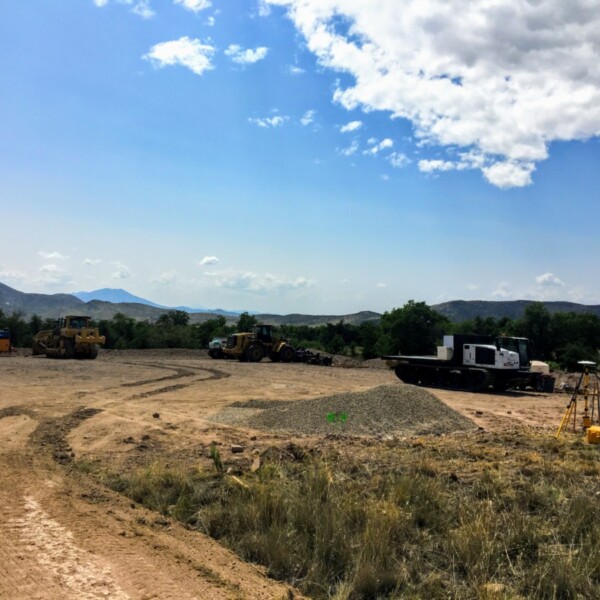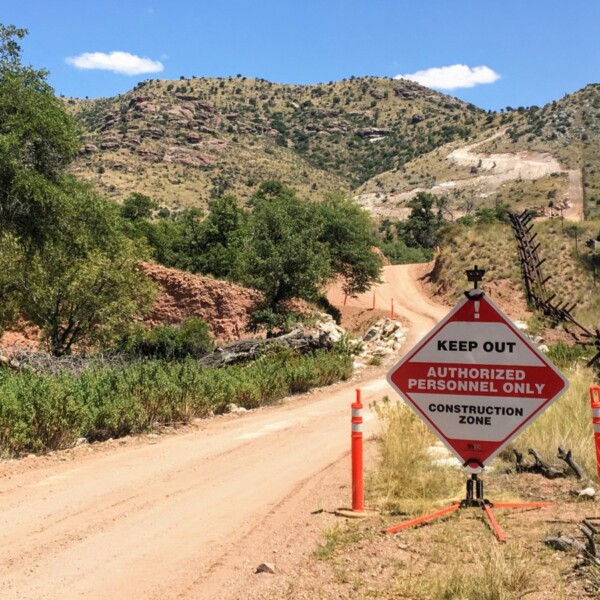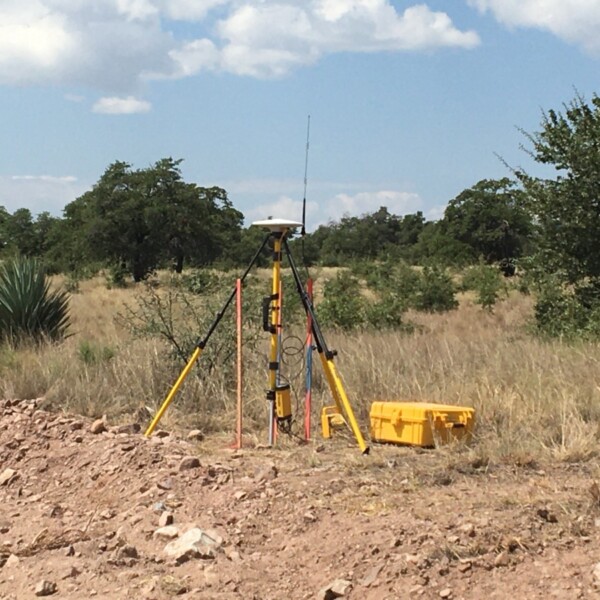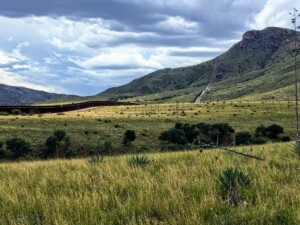
Existing wall and new construction heading up to Coronado Peak in Coronado National Memorial (east of Montezuma Pass). This will cut through the scenic Arizona Trail and destroy the current starting point on the border. July 2020.
A large part of my job is maintaining our field cameras for the Border Wildlife Study stretching between the Patagonia Mountains and the Huachuca Mountains. I’ve always loved fieldwork—a chance to escape my desk and get out in the world to observe what’s going on around me. Each week I visit one of our camera blocks on the U.S. side of the border, which has allowed me to note and appreciate seasonal changes including vegetation growth, fire patterns, and monsoon rains. Unfortunately, over the past two months, it has also permitted me to see new border wall construction in action.
In July we received the devastating news of the construction in the San Pedro River bed—trench digging and concrete pouring over the last undammed river in the west. Then, a few weeks later, news came even closer to home—the announcement of 2 additional miles of border wall construction through the Coronado National Memorial (National Park Service), an area just east of our study site.
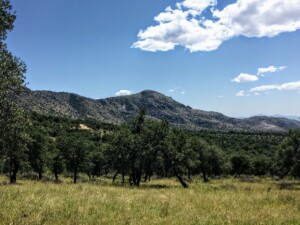
New construction in Coronado National Forest spotted while hiking down from the Huachuca Mountains. Forest Road 61 climbs to Montezuma Pass (tower visible in center of photo), with Coronado Peak to the right. New switchback access road to the far right (west of Montezuma Pass). September 2020.
When I thought construction couldn’t get any closer, September brought a rude awakening. As a volunteer and I hiked down from a spring in the Huachuca Mountains less than three miles north of the border, we gaped at a new scar on the landscape. An ominous switch back road was being carved up a steep slope just south of Montezuma Pass and Coronado Peak. The terrain is so rugged that even the steel vehicle barrier that stretches throughout our study area peters off here, leaving only the original barbed wire fence along the international border. Still in disbelief, we drove down the usual forest roads we utilize for camera access points. There, we found a freshly bulldozed lot for heavy equipment, various contractor vehicles, and a sign closing the area to the public. In the past few weeks, we’ve continued to notice a significant increase of vehicles and personnel in an otherwise remote and solitary place.
I continue to be saddened by the seemingly increasingly rapid pace of construction. Despite months of working along the border, knowing that these plans were in the works, I have been left speechless during my September visits to the Huachuca Mountain foothills as I witness massive ecological change unfolding.
My fieldwork means even more to me now—knowing that I must continue to maintain our cameras and collect wildlife data to document the biodiversity of the region. I know these data will help protect the wildlife, water, and human communities along our shared border.

